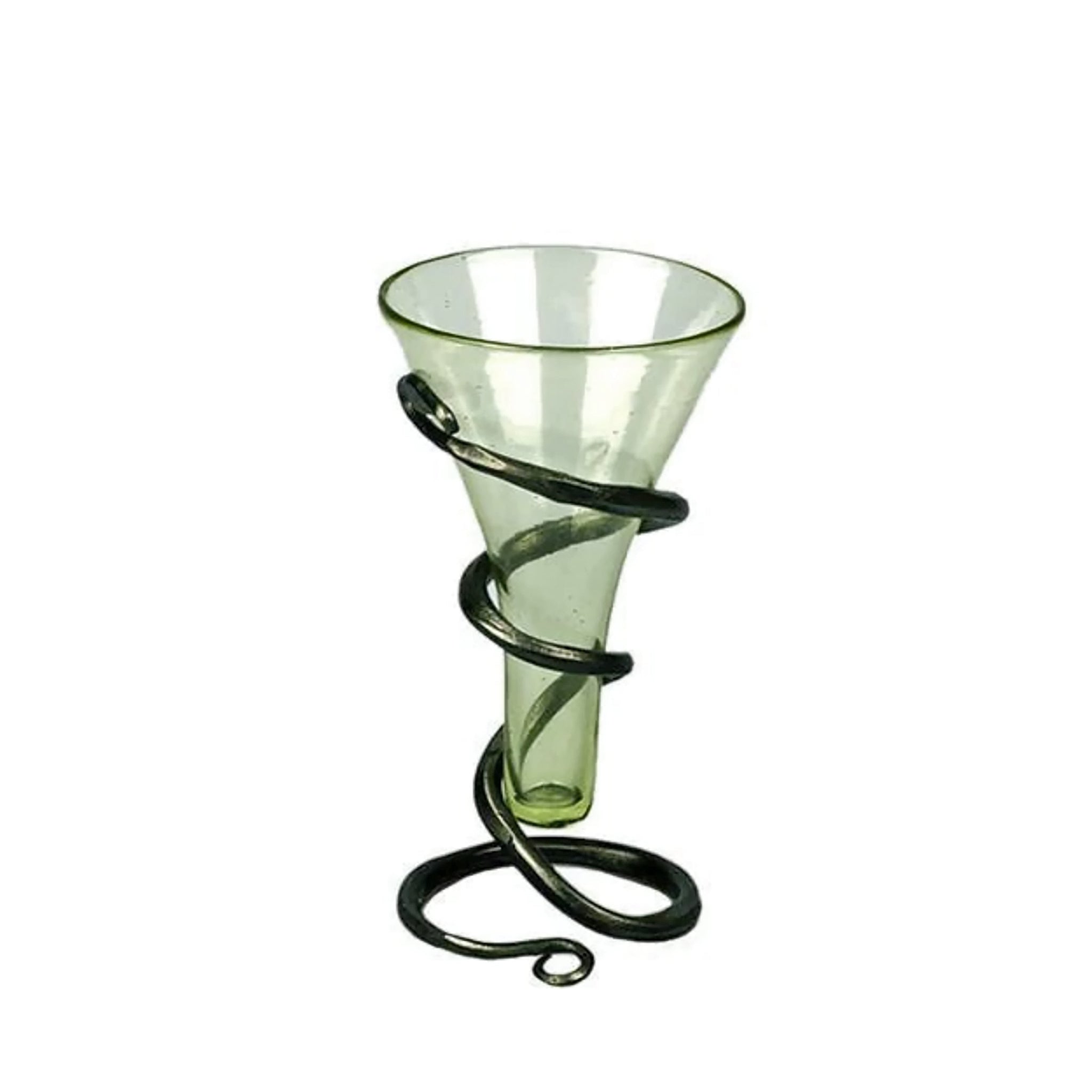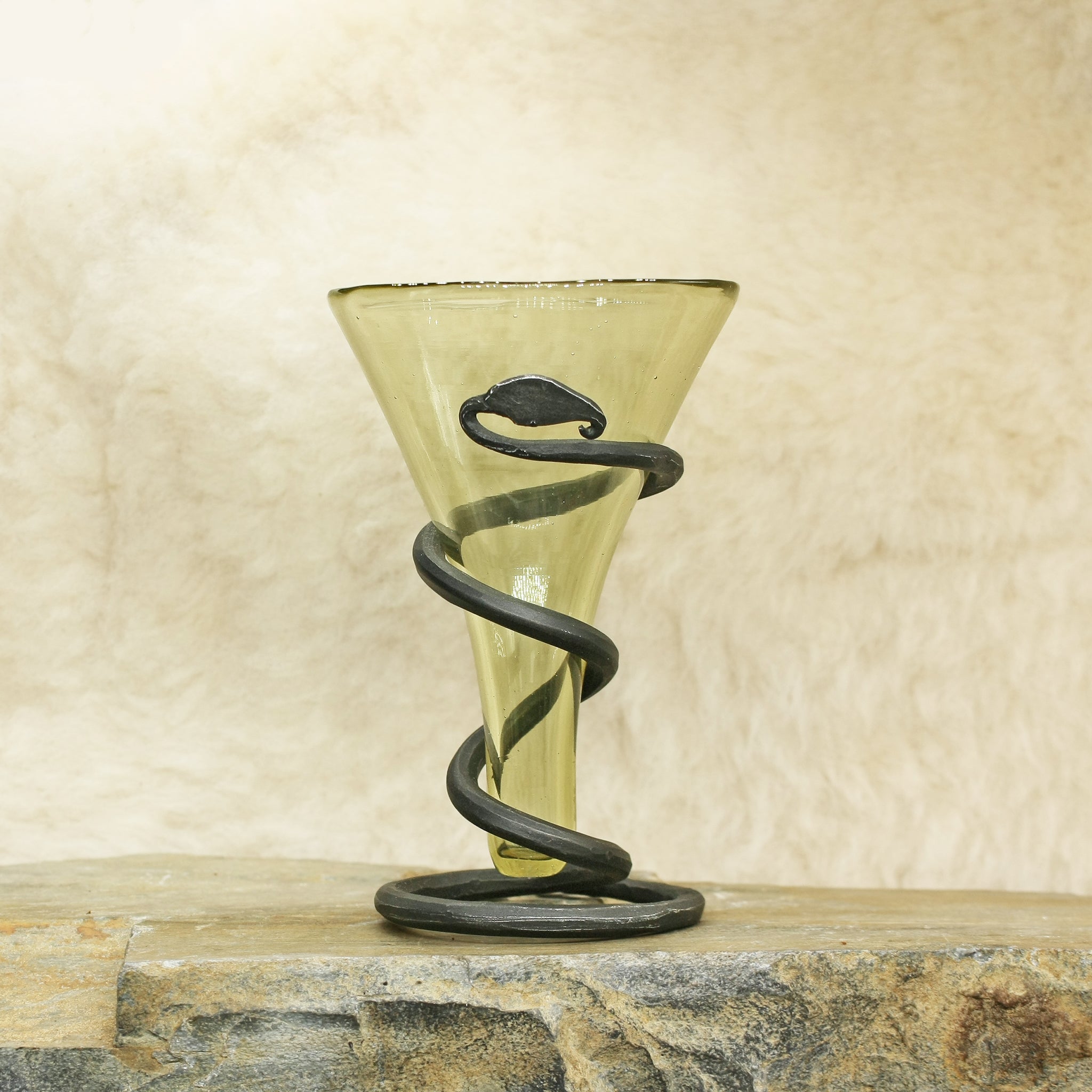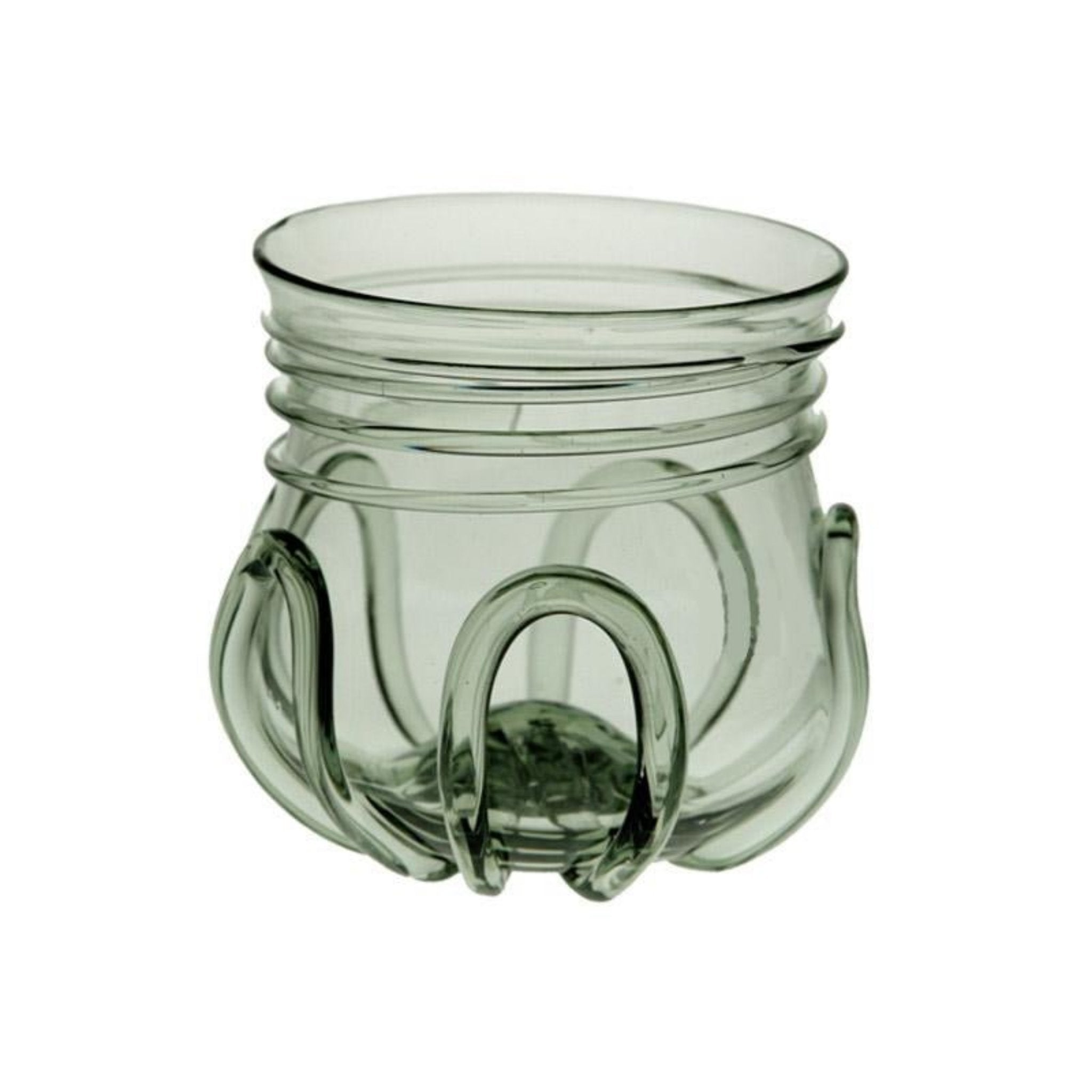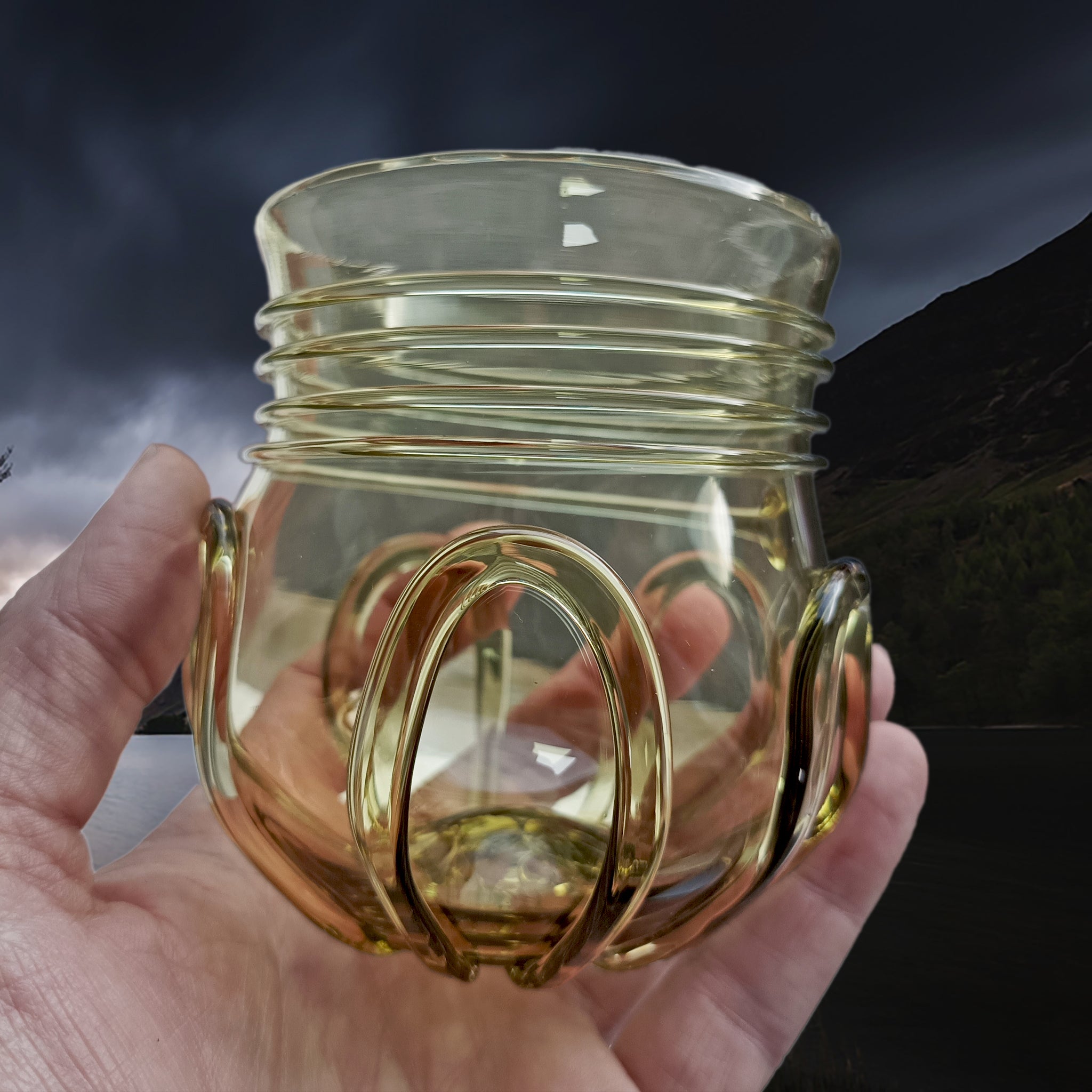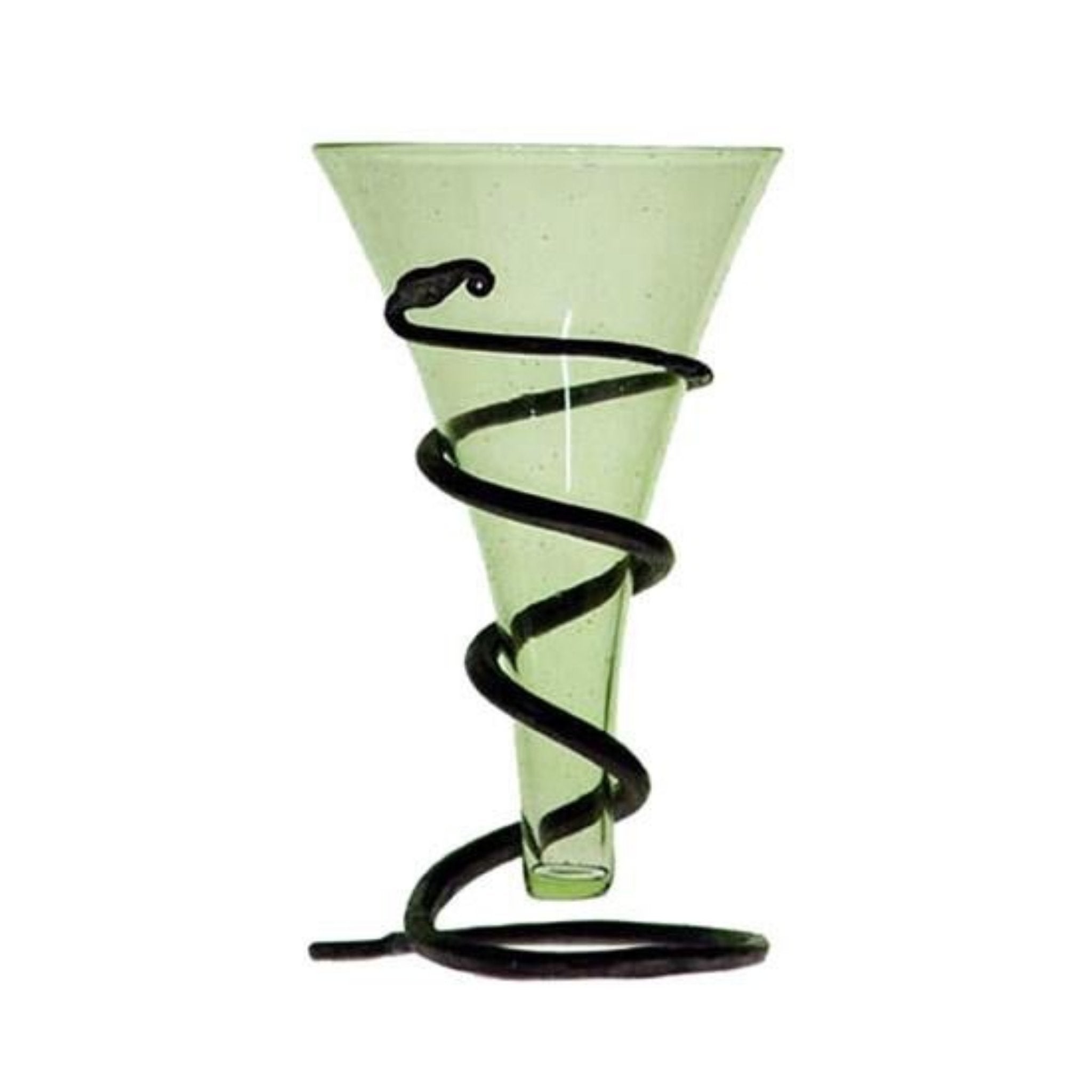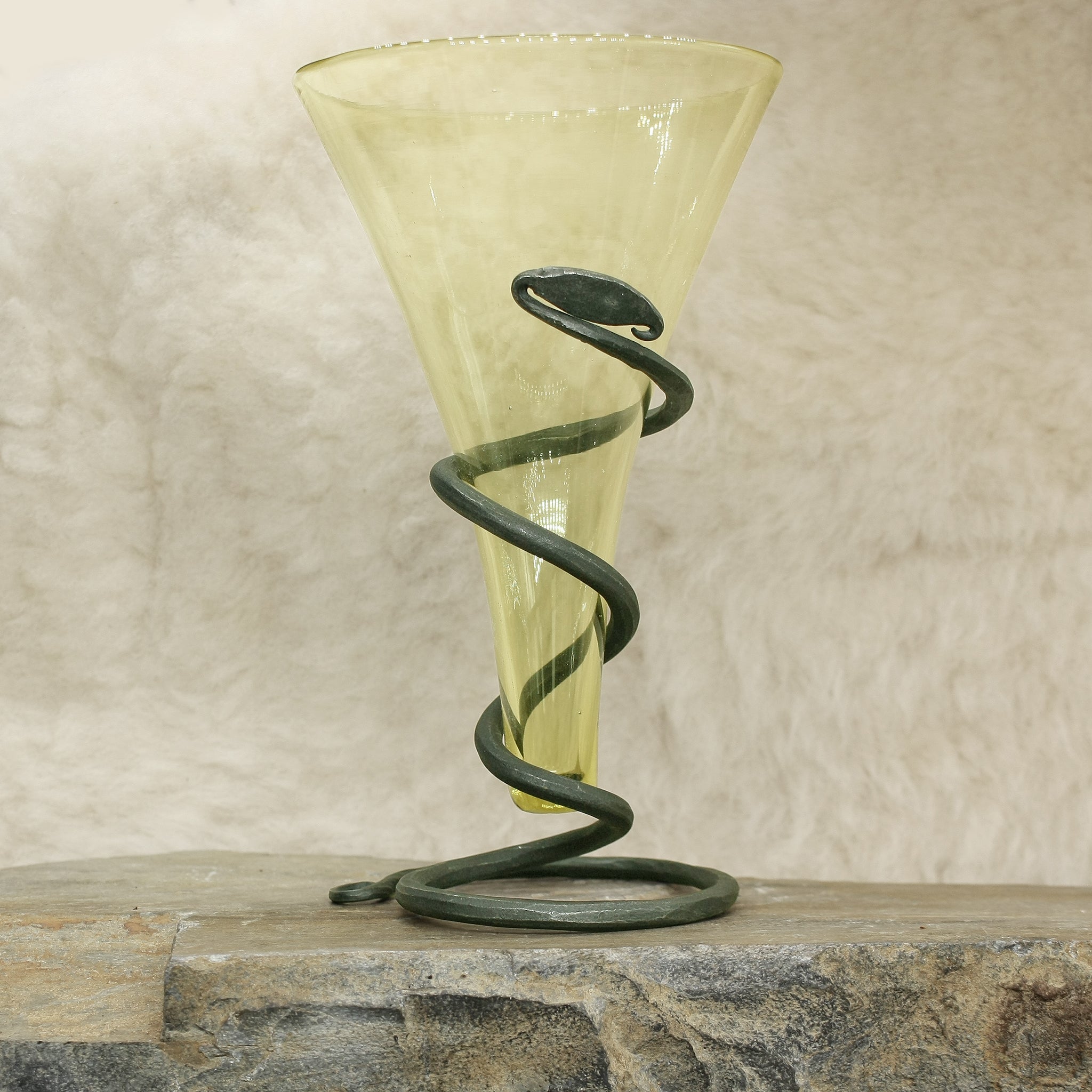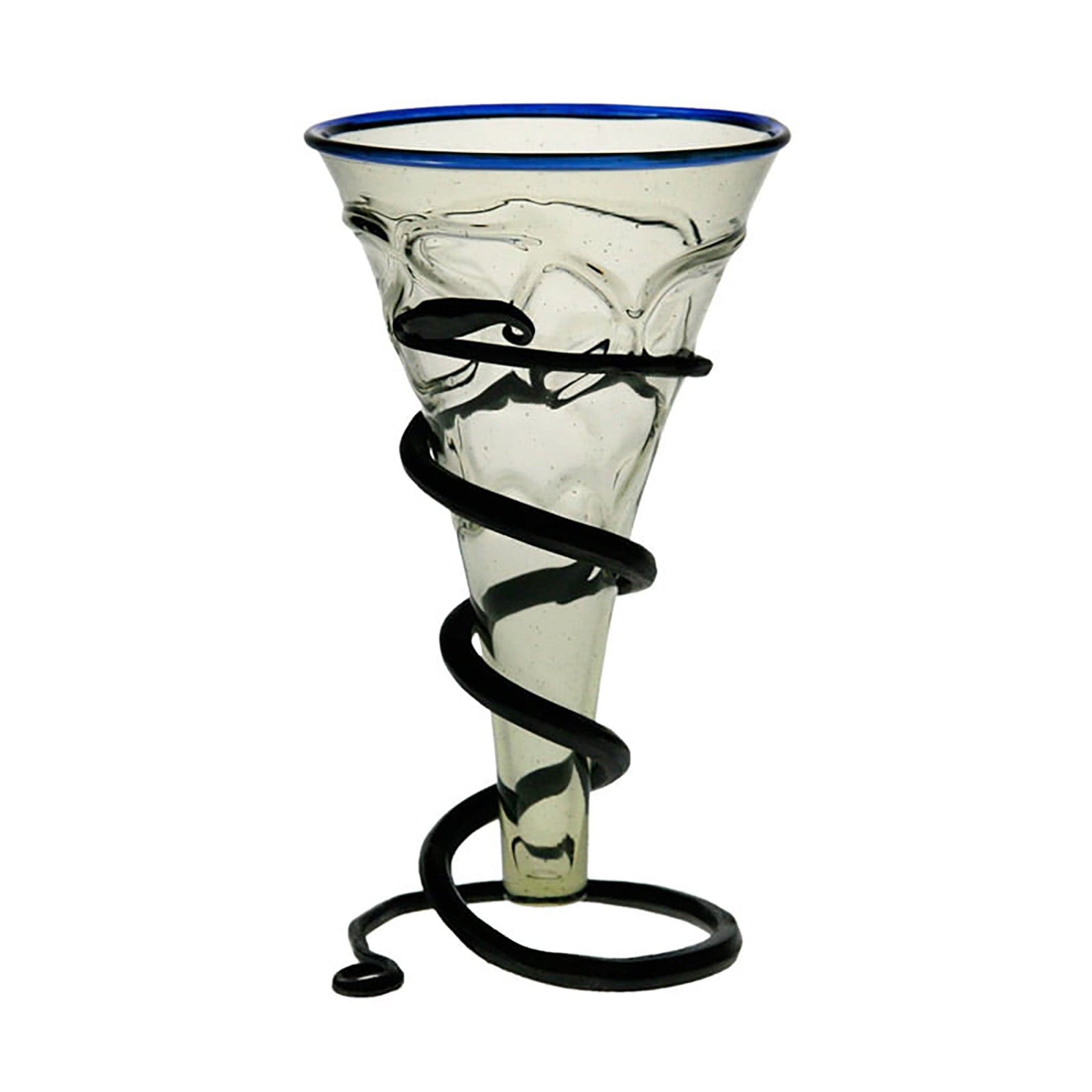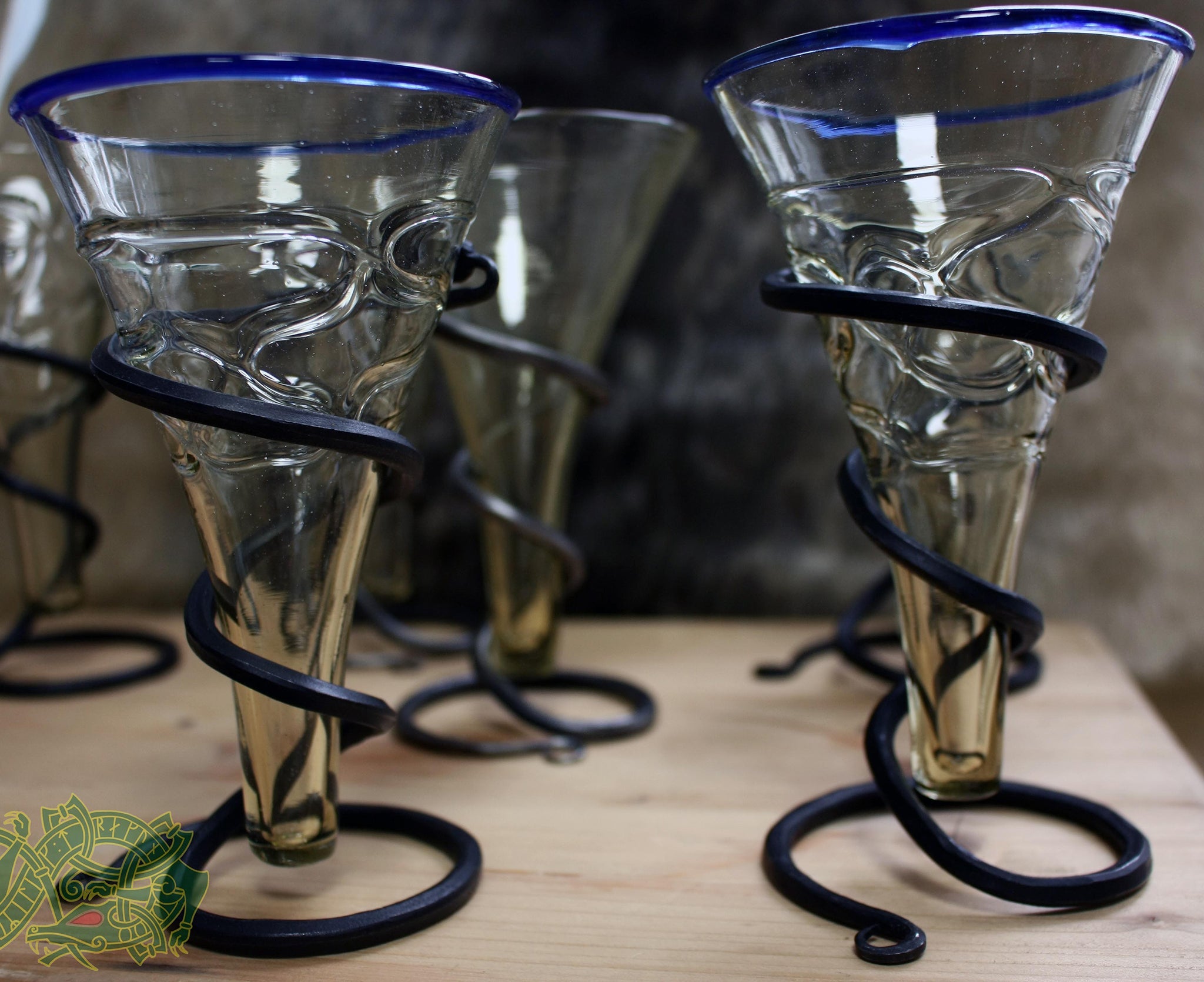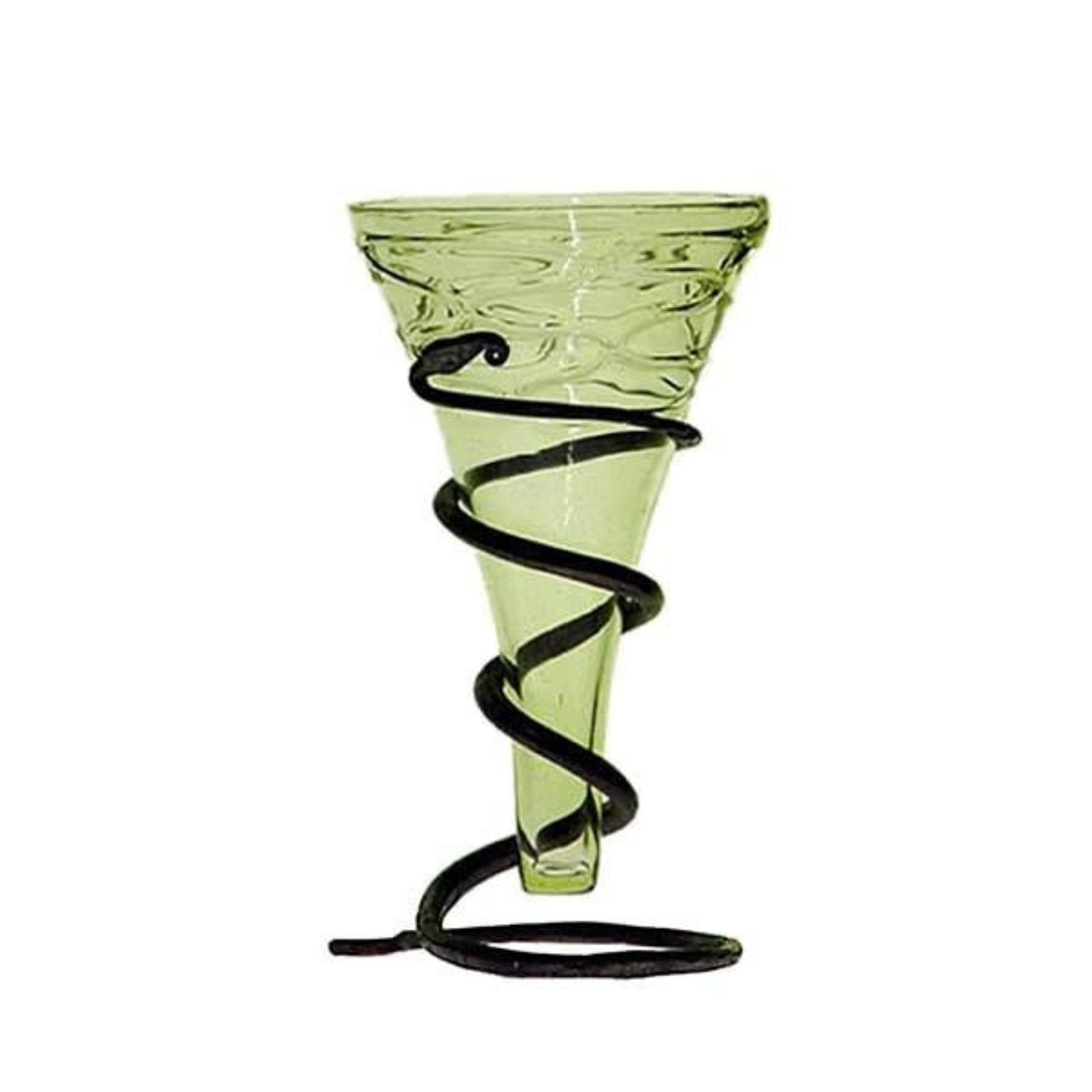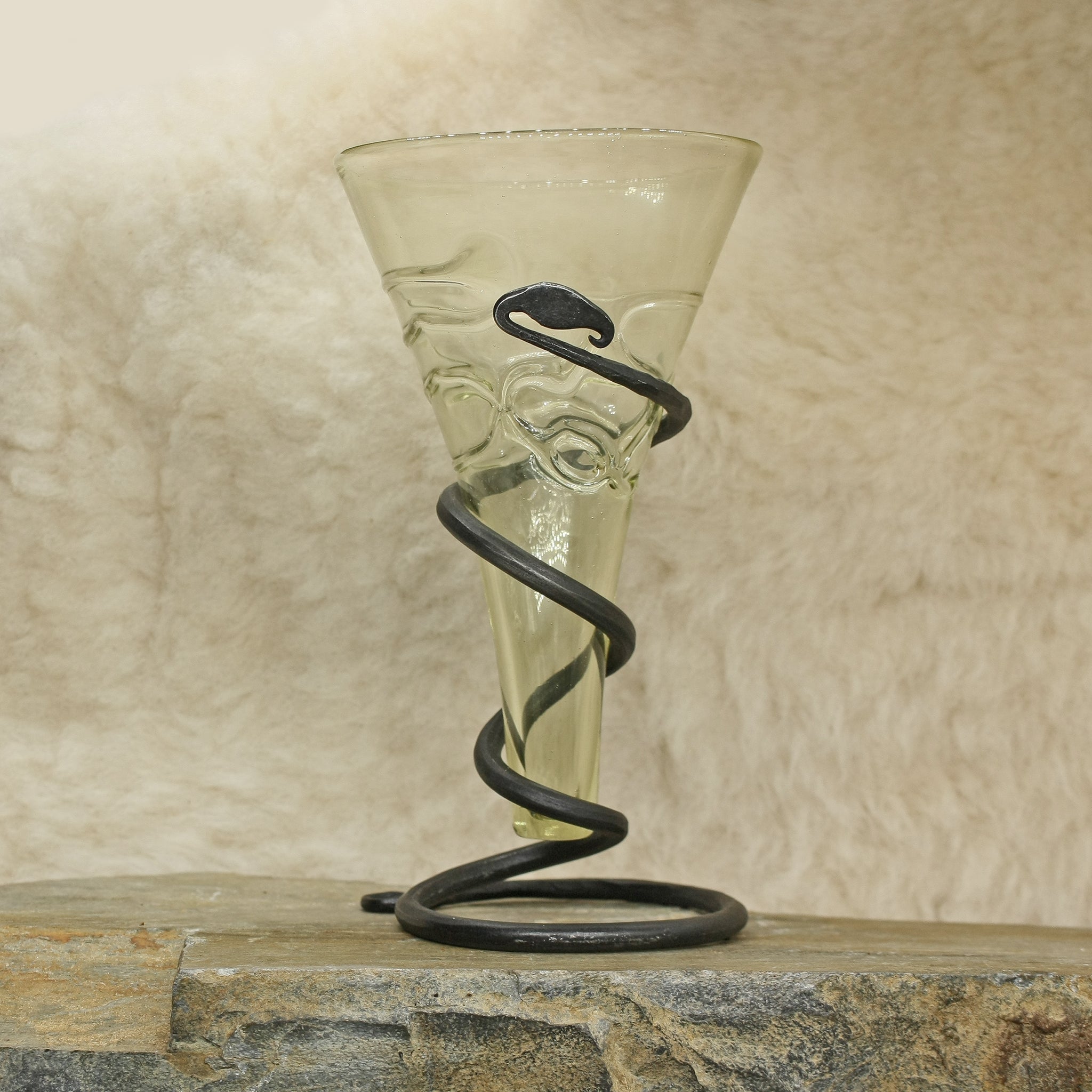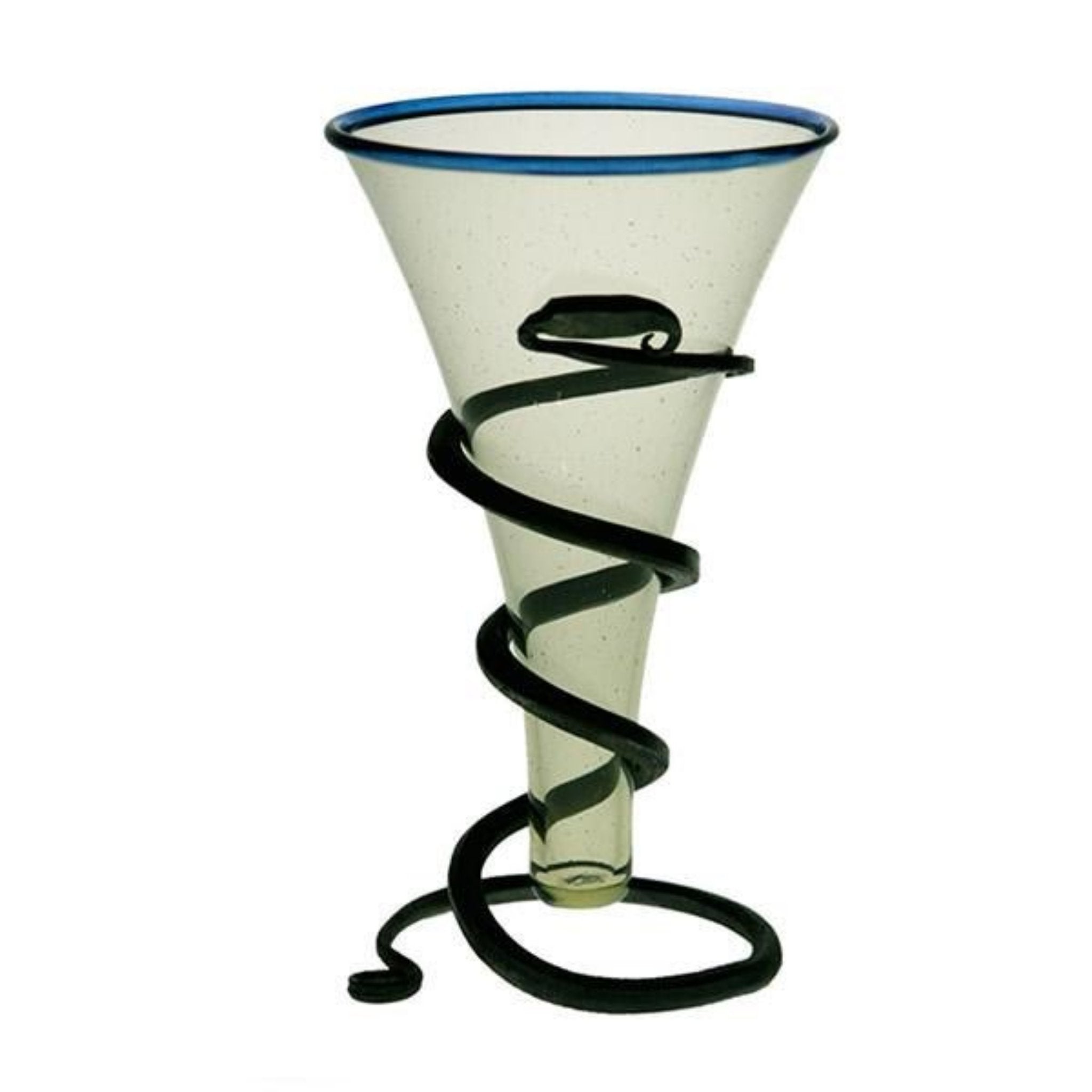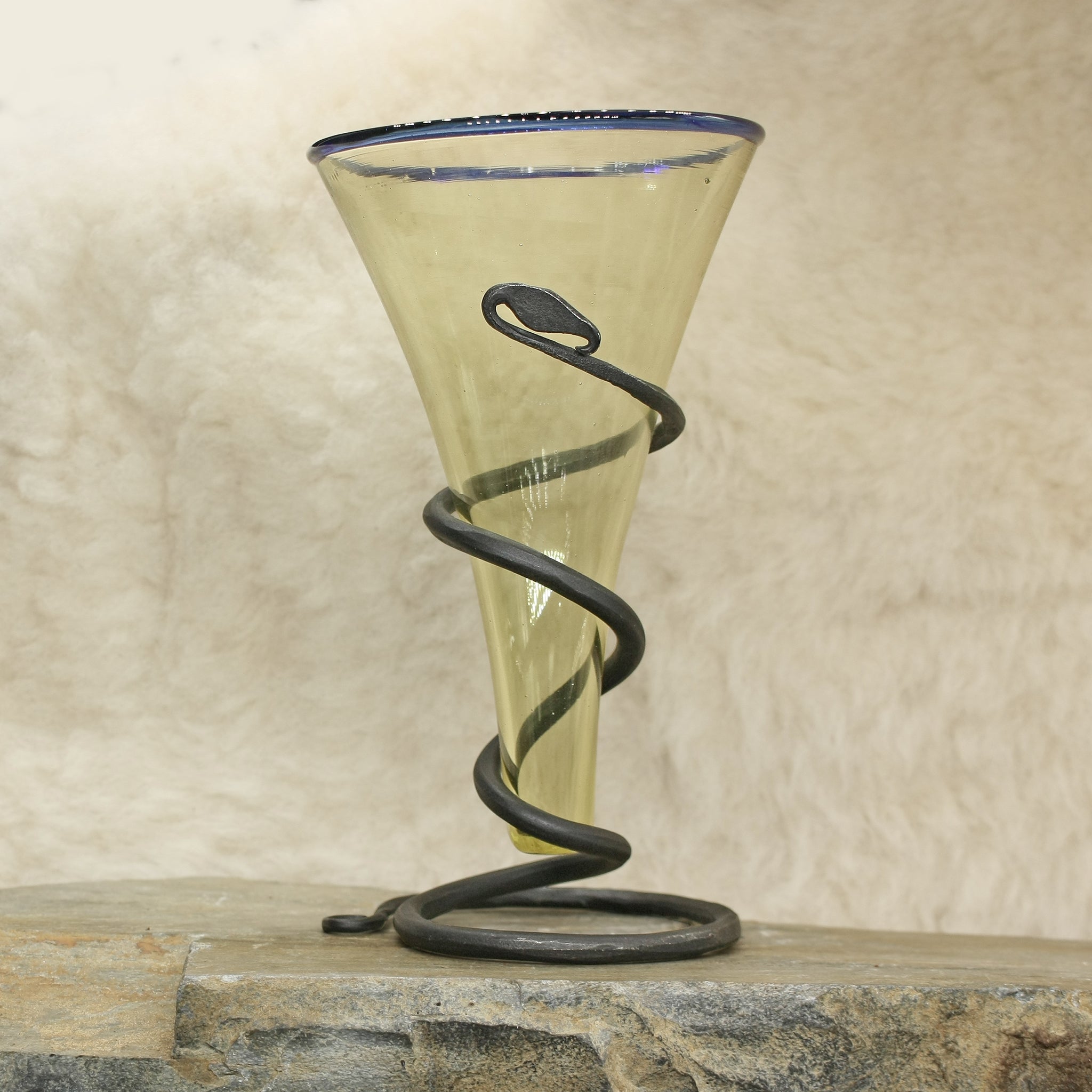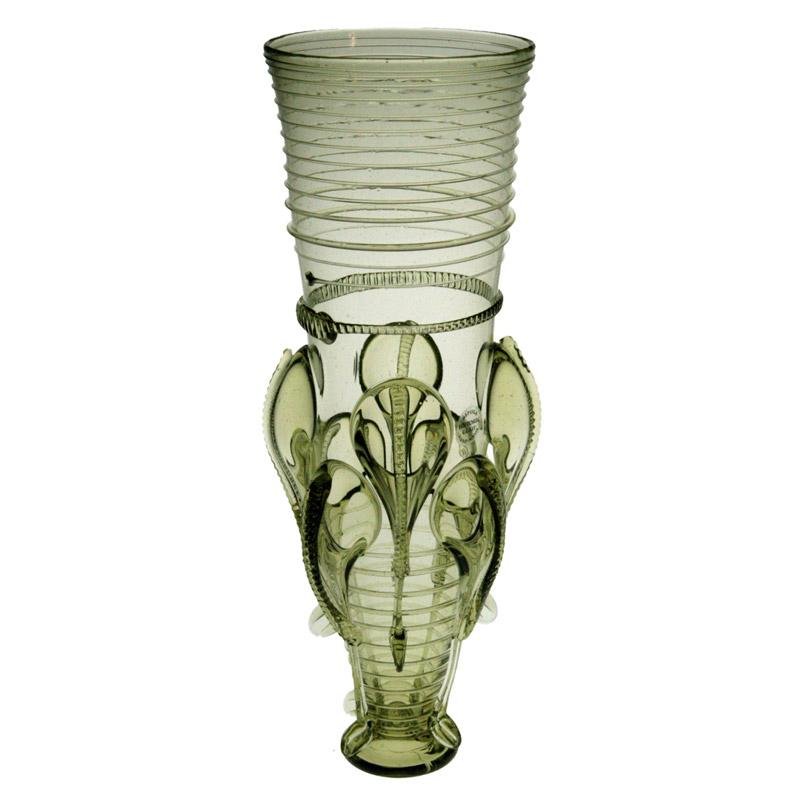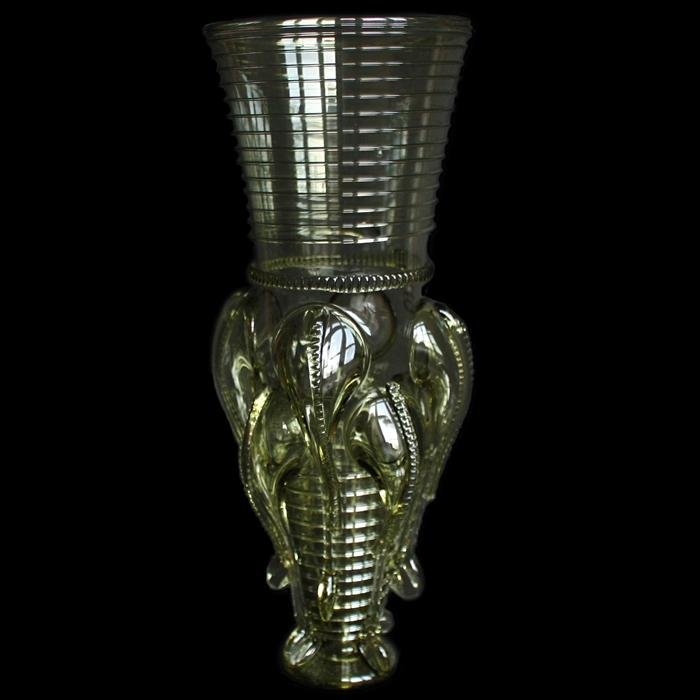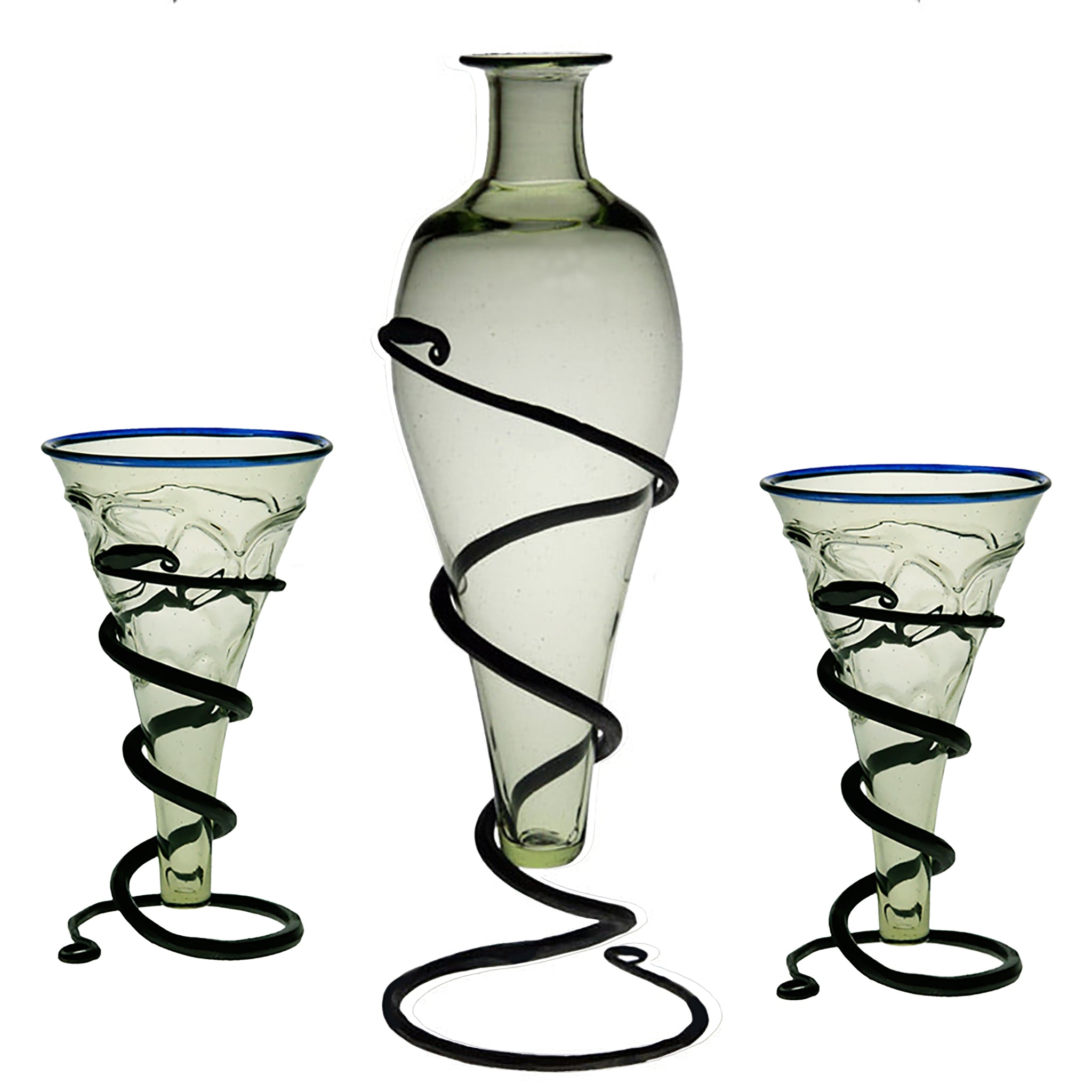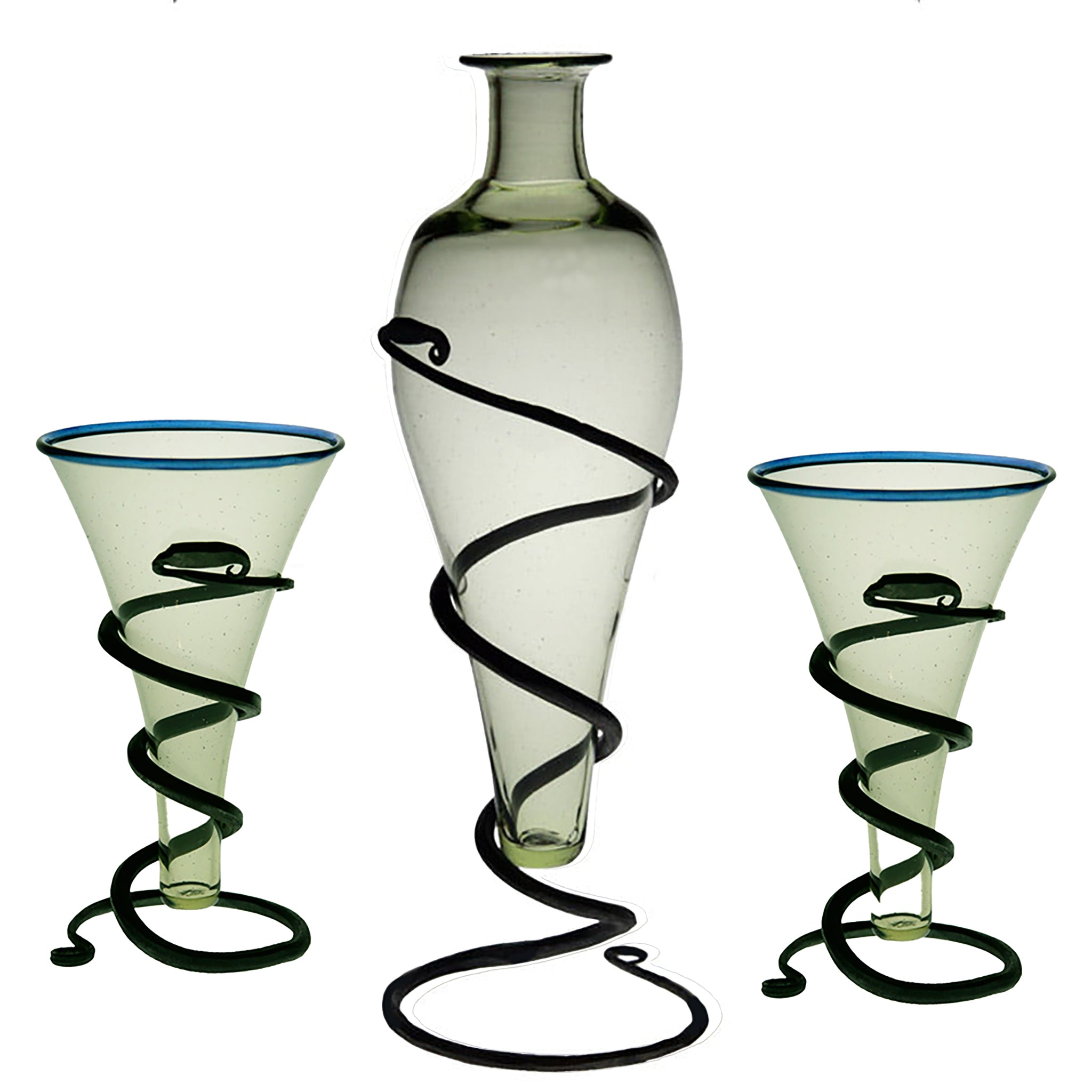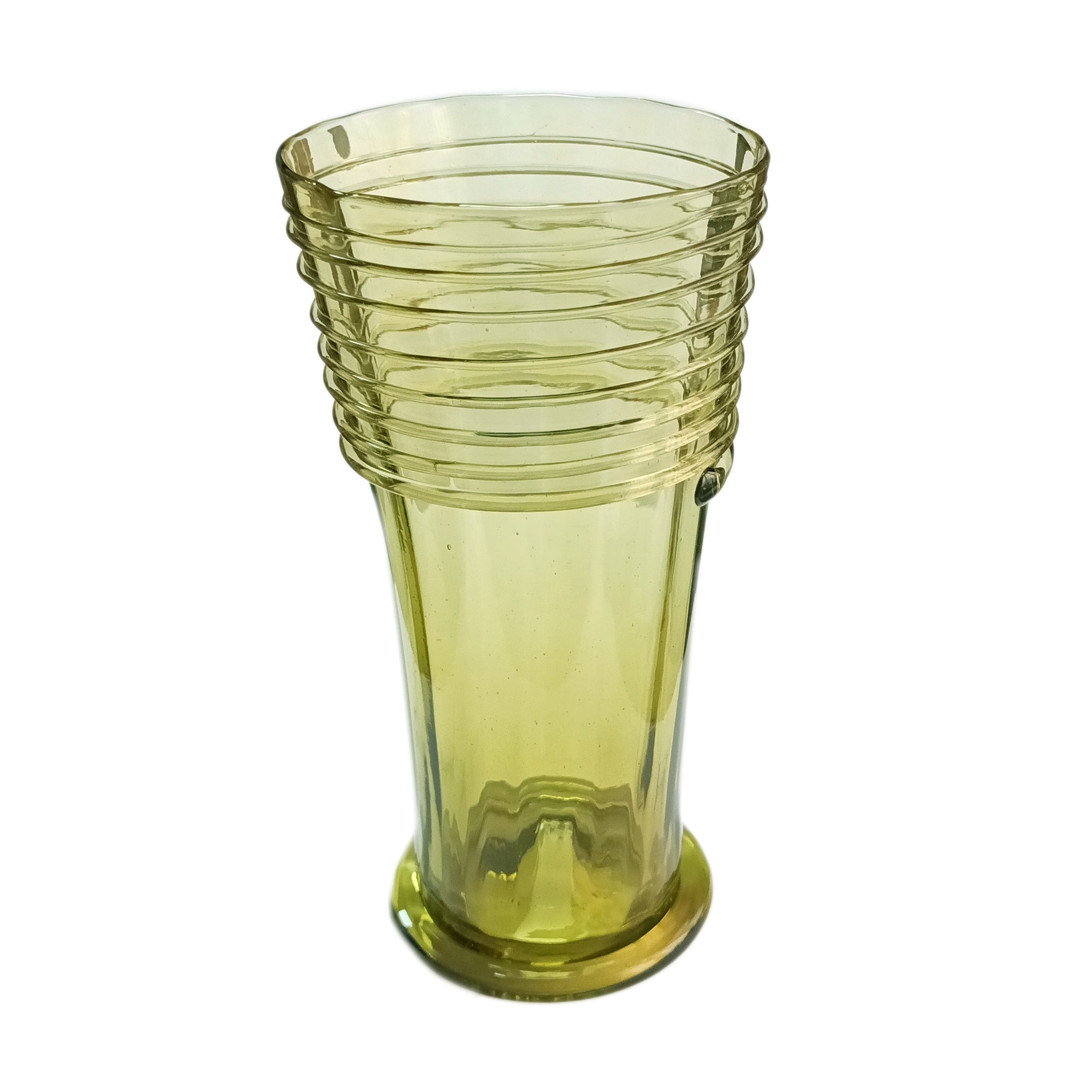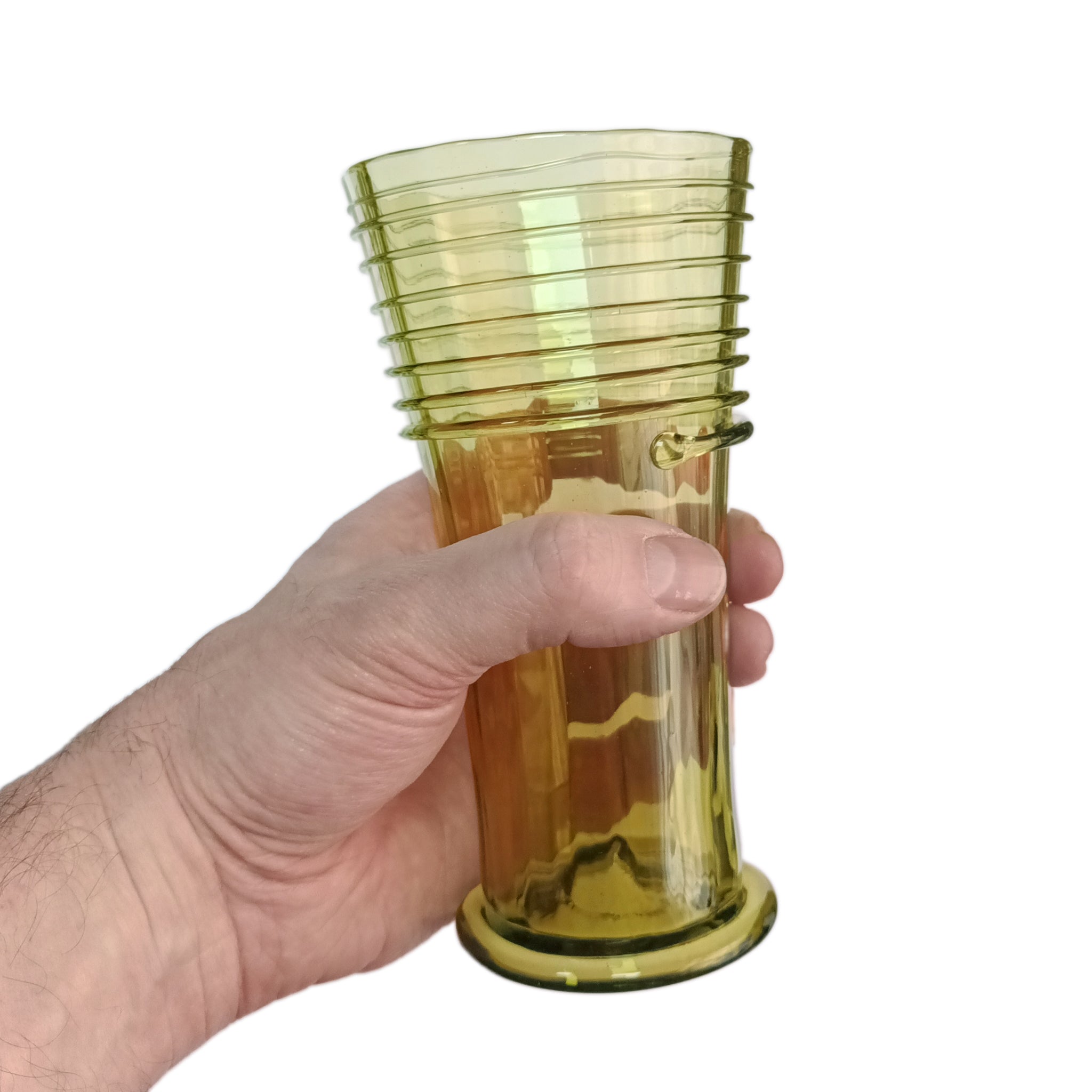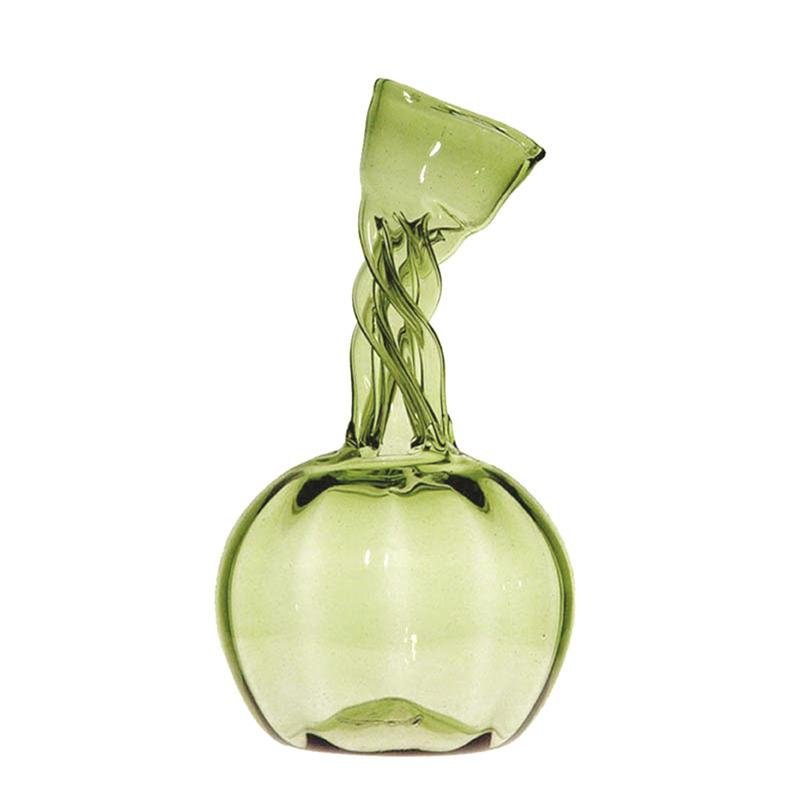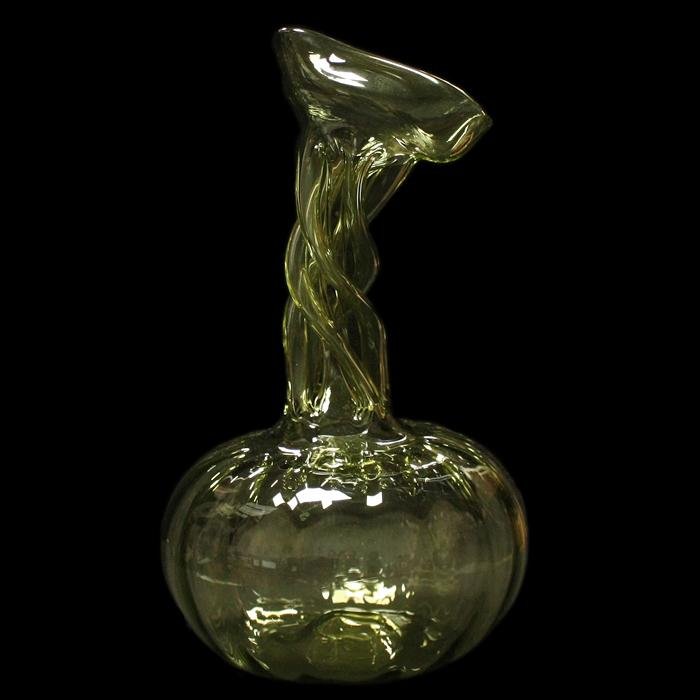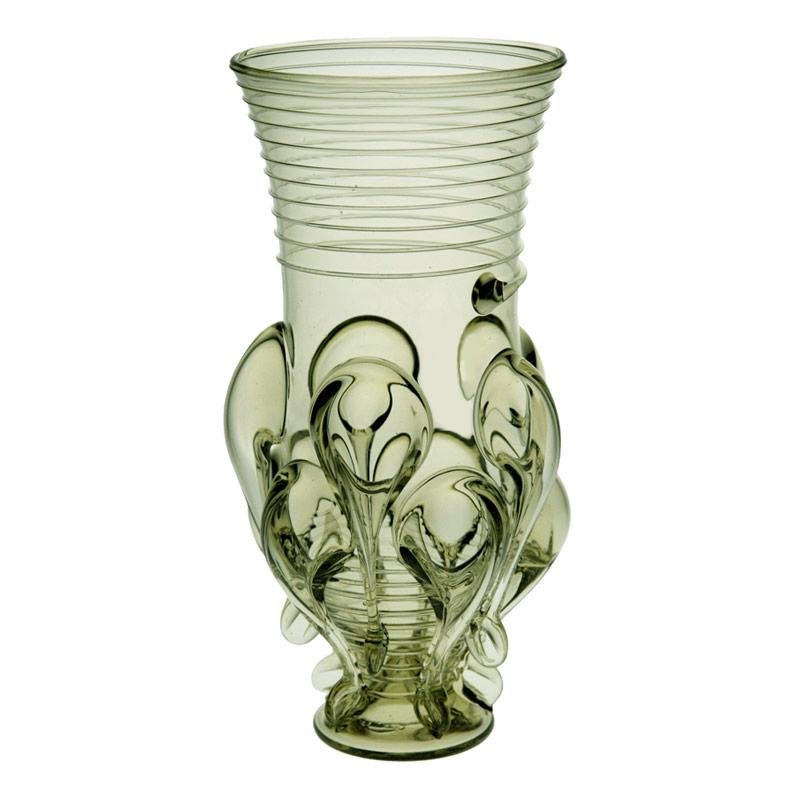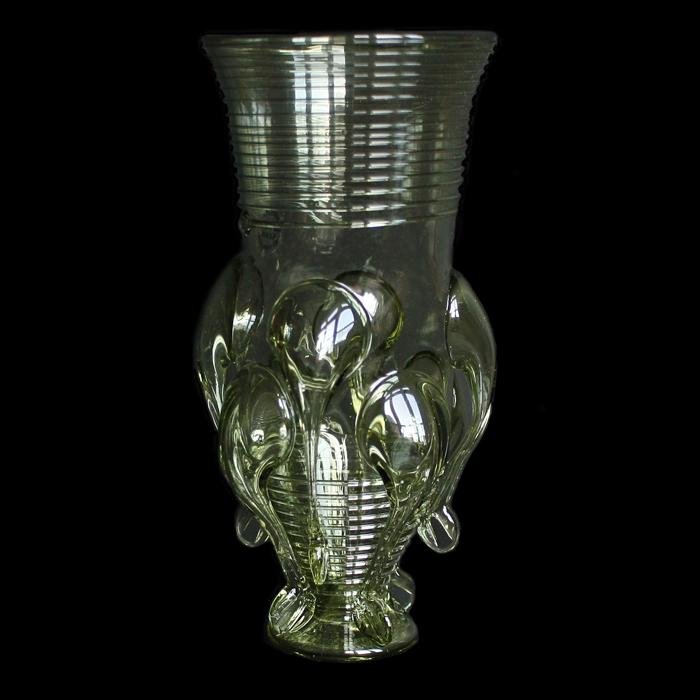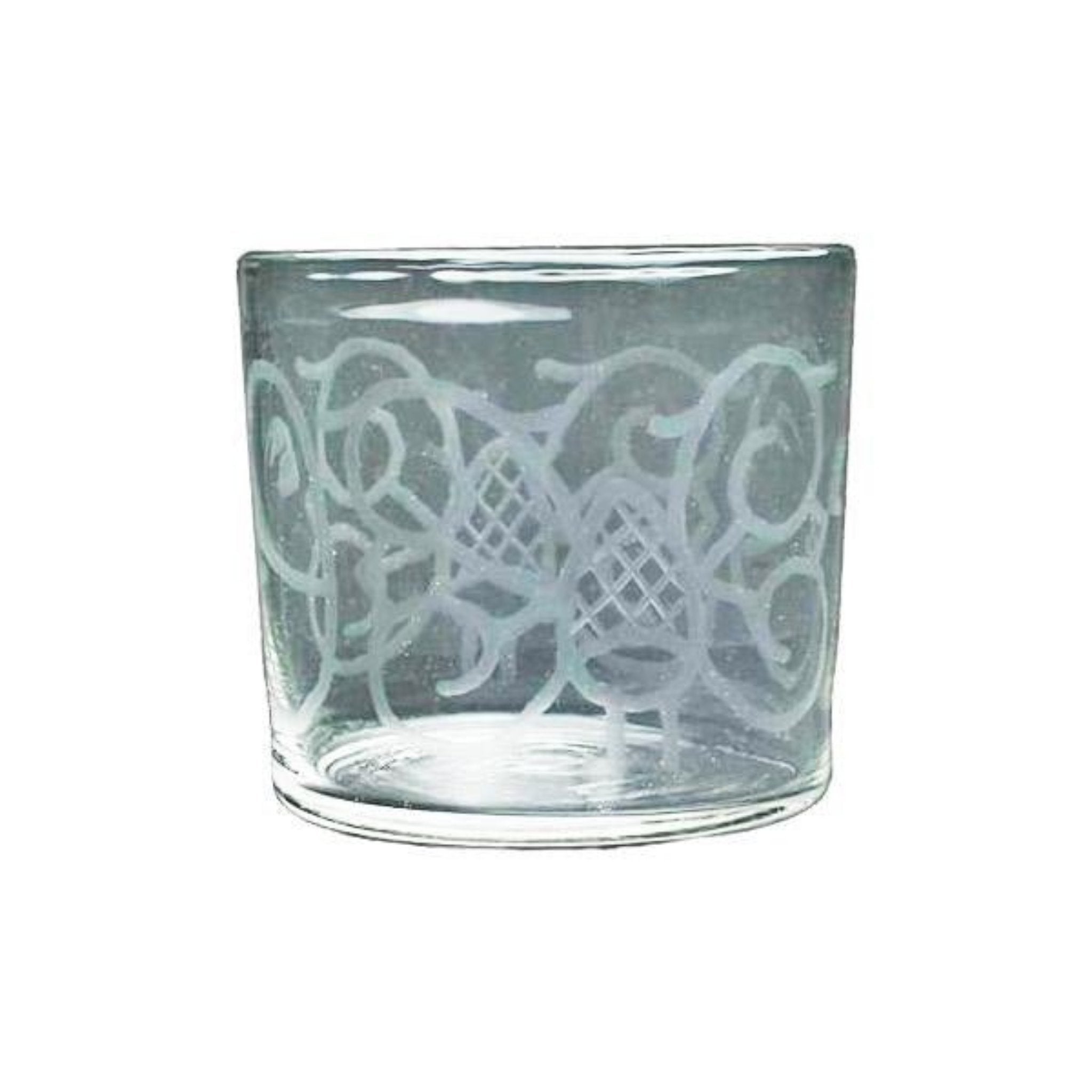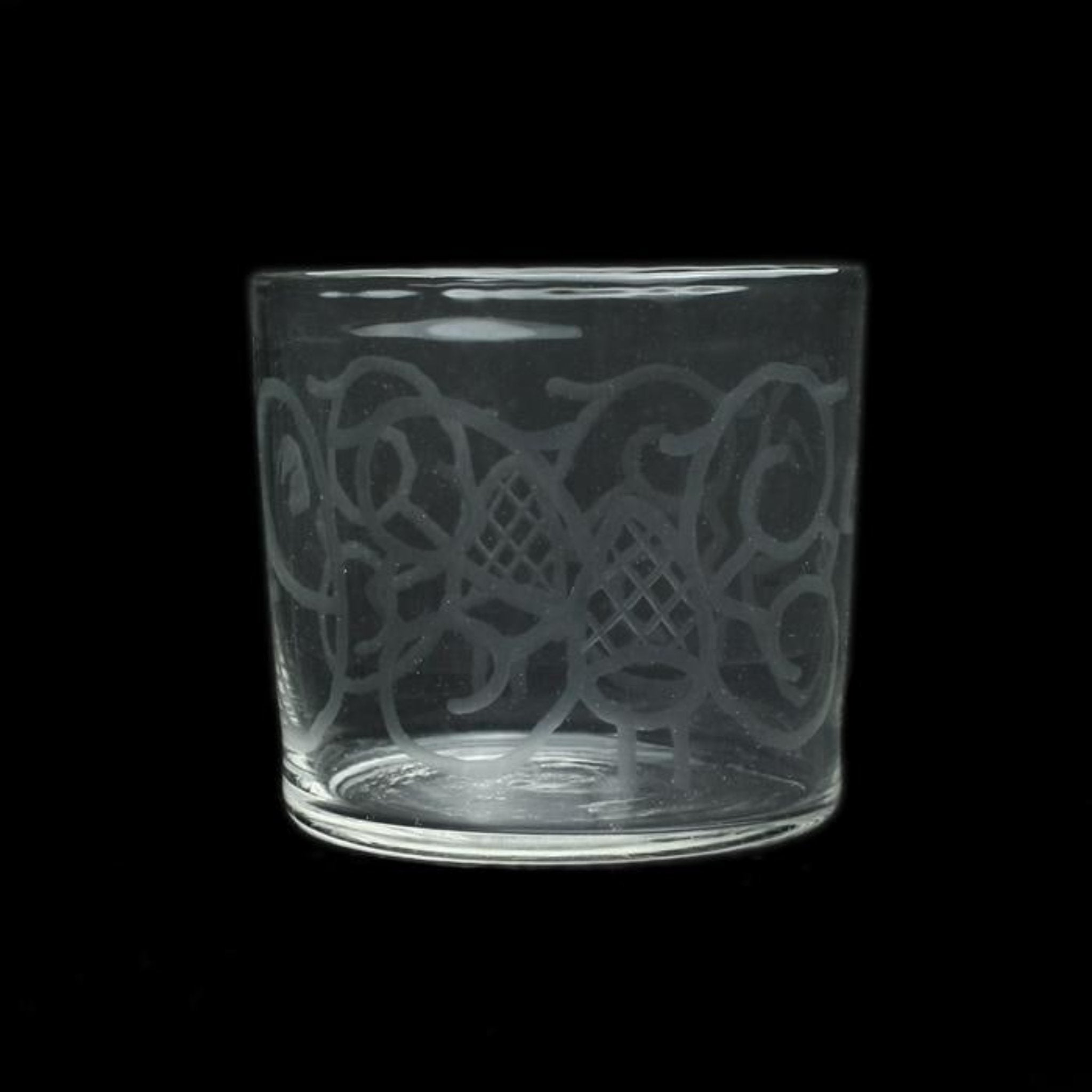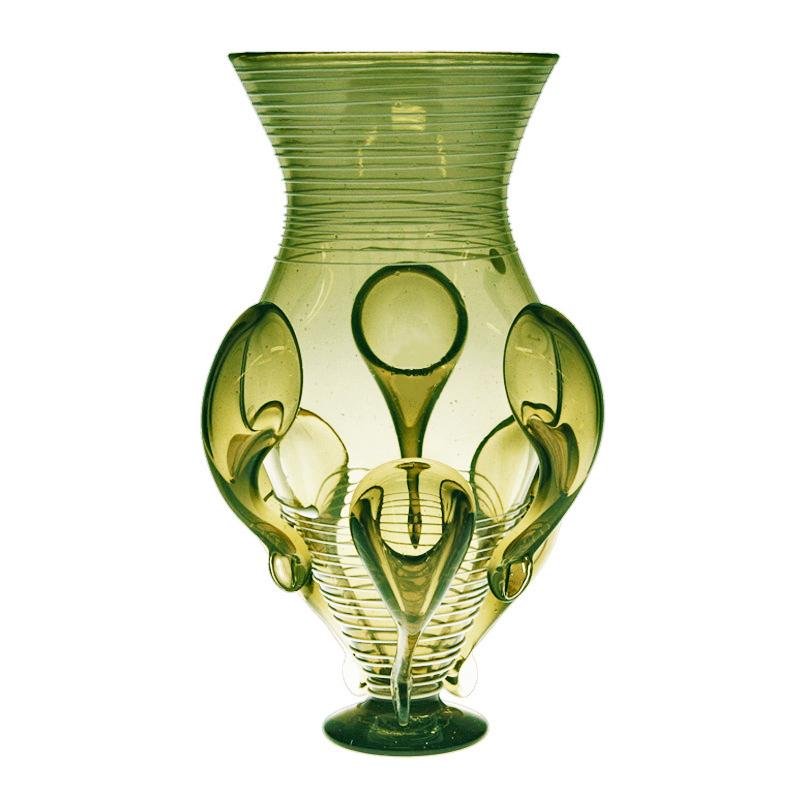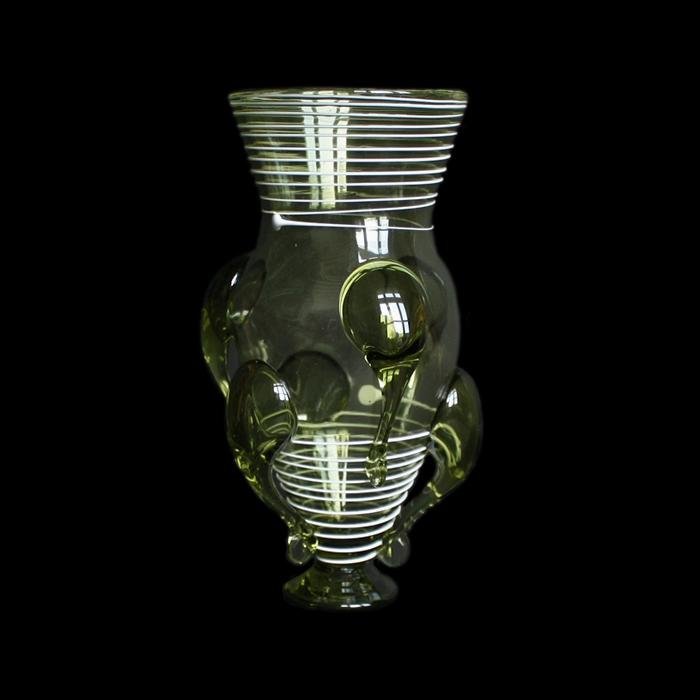Beer and Mead Glasses

Viking Glasses, Viking Mead Sets, Viking Cone Beakers, Viking Claw Beakers, Medieval Glasses & Medieval Kuttrolfs.
Our Viking and early Medieval glasses are all produced by hand using the same techniques that were employed 1000 years ago, making each glass a unique work of art. The raw materials for our Viking glasses are specially prepared to attain the colour, structure and air bubbles that can be found in the originals.
History
Glass was first produced about 5000 years ago in the middle east presumably as a development of pottery glazes. The earliest blown glass is from the 1st century AD and was produced in the Eastern Mediterranean. The art of glass blowing spread rapidly over Europe, mostly within the Roman Empire. One of the earliest centres was situated around the Rhine Valley in what is now Germany and eastern France. Further expansion over Europe took place during the 6-7th Century when the first pieces started appearing in Scandinavia.
The cone beaker was the most common type of glass vessel during the Viking age, AD 800 - 1050. Large numbers of Viking cone beakers have been found during archeological excavations in Sweden, Norway, Denmark, northern Germany and other European sites. At Björko (Birka), in Sweden, cone beakers of various sizes and shapes have been found, mainly in women's graves. Cone beakers with a blue rim were found during excavations of the Viking age fortress as Trelleborg, Denmark.
The original glasses were probably of Frankish origin and brought home by Viking returning from raids, or trading. The shape of the glasses has been explained by the Germanic drinking habits, where you had to drink "bottoms up" before putting the glass back down on the table.
The Vikings drank mead & beer. Mead was and still is produced with honey and so made it a valuable commodity in the Viking age and the bear drank in the dark ages was much different from that of today as it was brewed with bogmyrtle instead of hops.
All of our glasses are produced by hand using the same techniques that were used over 1000 years ago and because of this reason our glasses may differ in thickness, size and colour and contain small bubbles fro the process used.

